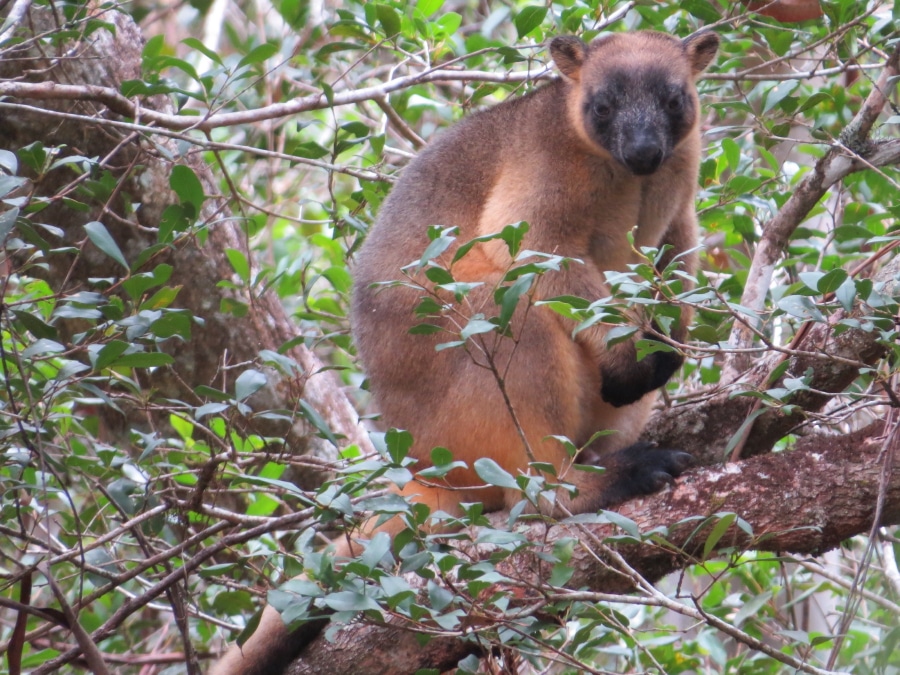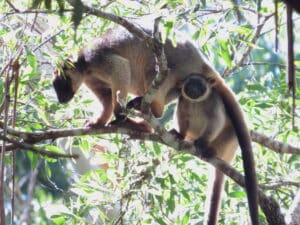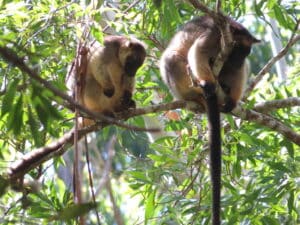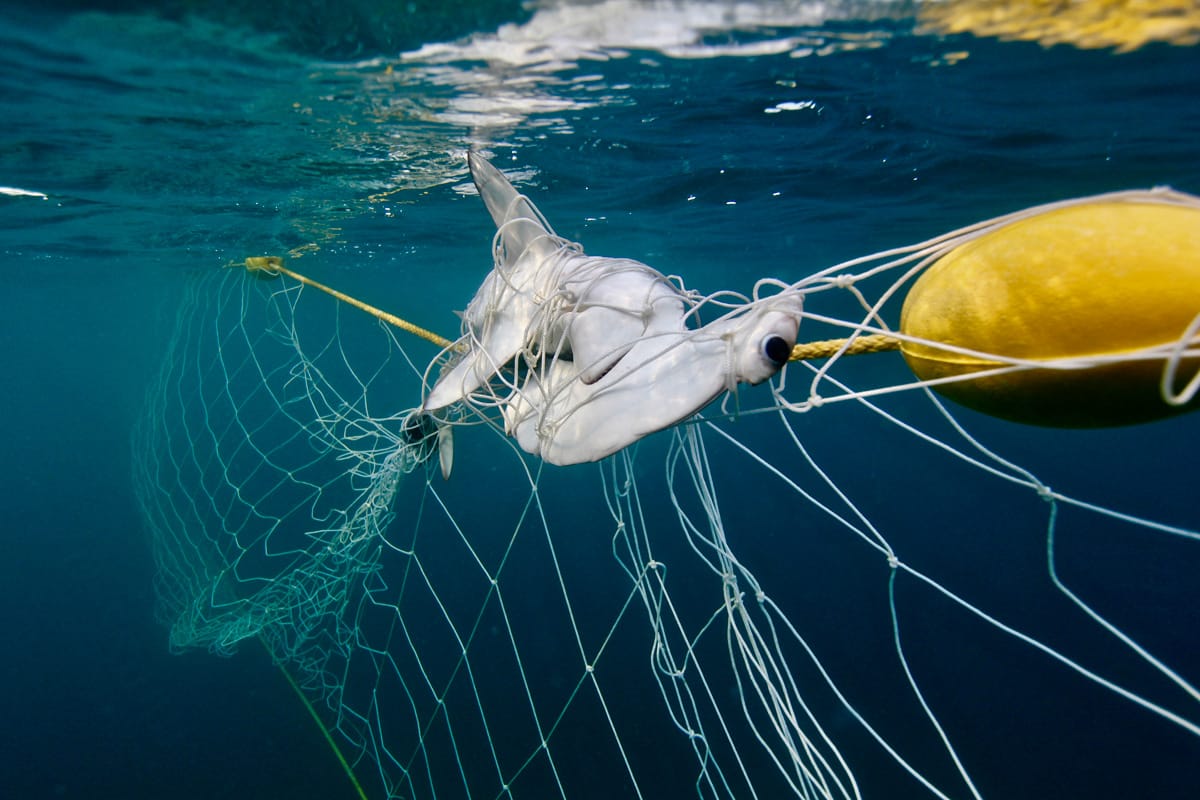Humane World for Animals has applauded decisions by three Sydney Councils to take part in a trial removal of one shark net from each of their respective Local Government Areas this summer (1 September 2025 – 31 March 2026). Central Coast, Northern Beaches and Waverley Councils each accepted the invitation...
Cover image: Tree kangaroos at White Claw – Geoff Spanner and Rosemary Rogers
Found high in the tropical rainforest canopies of north-eastern Queensland, the elusive tree kangaroos are Australia’s only tree-dwelling macropods. Descended from an ancestor similar to a pademelon, their strong hind legs and curved claws are adapted to gripping trees, whilst long tails provide balance as they leap between branches. Several species are found in the Asia Pacific region, but only two species are endemic to Australia, the Lumholtz’s (Dendrolagus lumholtzi) and Bennett’s (Dendrolagus bennettianus) tree kangaroos.
Most tree kangaroos live isolated in home ranges, which they fiercely defend from outsiders. They move along the ground with an awkward hop, but their agility in the trees is remarkable, and they can leap up to 9 metres between branches. Unlike most macropods, their diet is quite general and ranges from leaves and fruit to grains, bark and sap. During the day, they sleep hunched on branches high in the canopies, away from predators like dingoes and carpet pythons.

Tree kangaroos play an important role as flagship species – as large and iconic animals they act as ambassadors for the ecosystems they are part of. But despite the World Heritage protections for their habitat, both species face increasingly severe threats to their survival and a low reproduction rate makes it difficult for the population to recover from declines. A current lack of research on these species makes it difficult to predict the futures of the populations or the impacts of development activities on their survival.
Tree kangaroos also dislike leaving their home range – they are known to stay in fragmented or disturbed areas rather than move to more intact forests. The destruction of tree kangaroo habitat has forced populations to live in fragmented areas of rainforest, where they must often travel on the ground to move between trees. This makes them easy targets for dog attacks and vehicle collisions. Climate change is also expected to further degrade their forests, as cyclones become more frequent and severe, temperatures rise and water sources diminish.

Wildlife Land Trust sanctuaries such as Nightwings Rainforest Centre, Lake View and Atherton Tablelands Birdwatchers’ Cabin help to conserve important tree kangaroo habitat, connecting fragmented rainforests and providing sanctuary from predators and human development.
Humane Society International Australia is making strides in protecting tree kangaroos and their habitats. Last year we successfully nominated Lowland Tropical Rainforest of the Wet Tropics Bioregion as an Endangered Ecological Community. This listing will permanently protect the last intact remnants of a unique rainforest ecosystem, providing habitat for tree kangaroos and other unique wildlife.

Images: Lumholtz’s tree-kangaroos at Atherton Tablelands Birdwatchers’ Cabin, a sanctuary owned by Christina and Thomas

